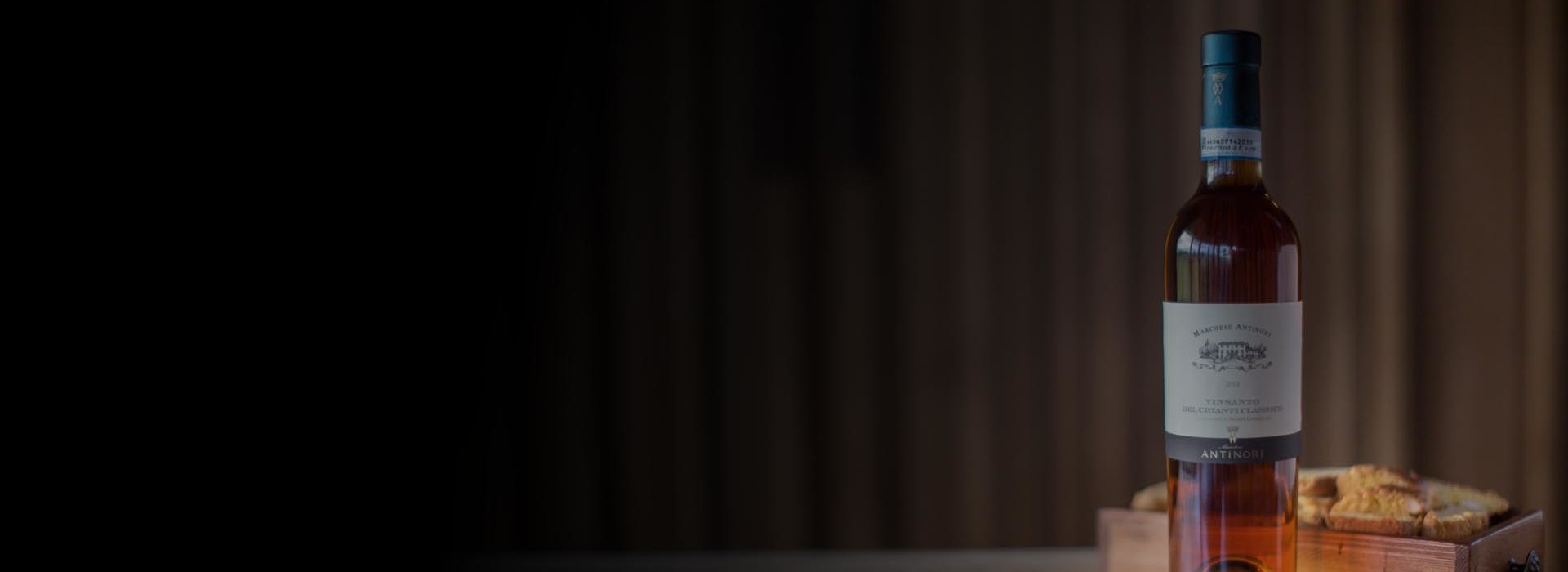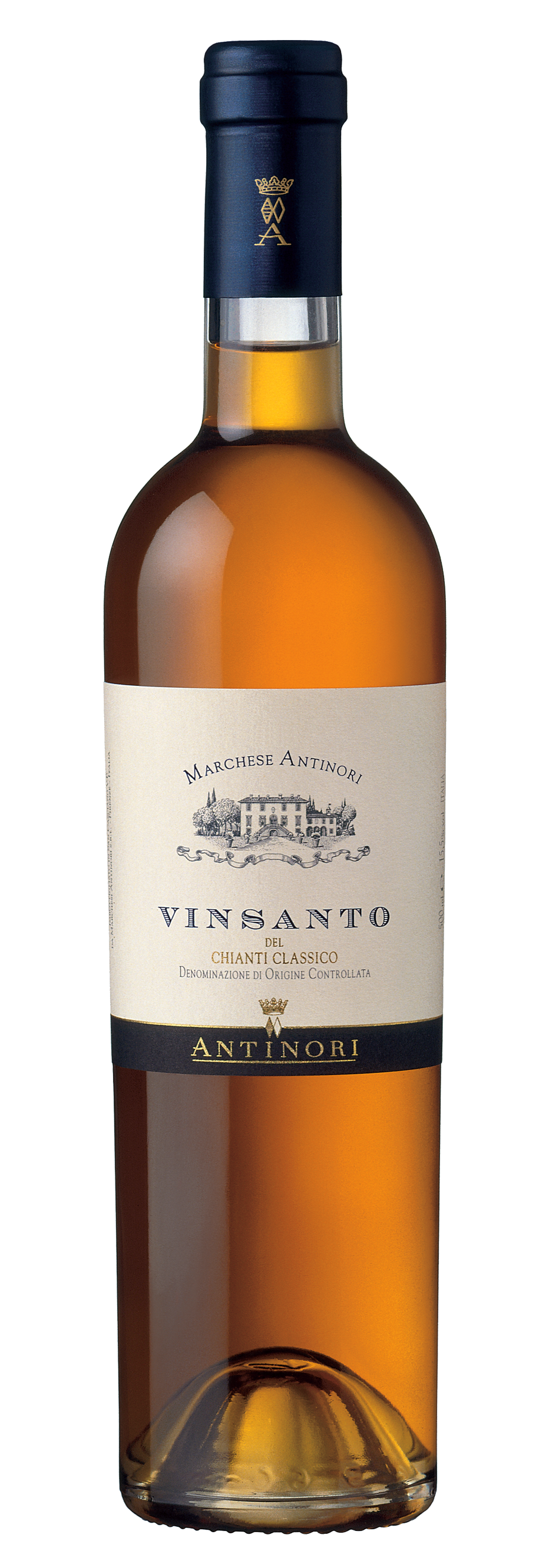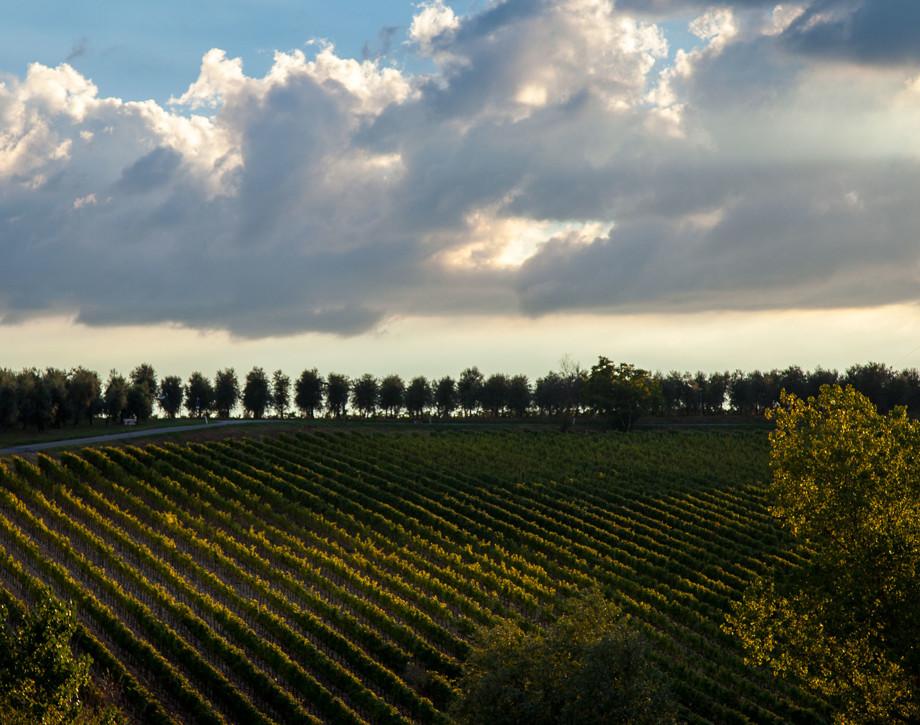Vinsanto Marchese Antinori

Climate
The climate in the Chianti Classico production zone was characterized by a cold and rainy weather in autumn and during the following winter; the precipitation in the winter months assured a good supply of ground water for a spring season which was initially mild and without any return of low temperatures. Bud burst, accordingly, took place regularly and within normal season averages. Late June and early July featured rainfall which favored vine vegetation, and both flowering and bud set were regular, even if the rains cited above led to larger grape berries and bunches, which entered into the summer season ahead of normal ripening schedules. August and the first ten days of September were quite hot but, despite these somewhat extreme conditions, the white grapes continued to ripen well and remained quite healthy as well. The picking, carried out entirely by hand into small packing cases, took place between September 18th and 20th, and the grapes then went through the drying process in specially equipped rooms and were given a final pressing just before Christmas.
Vinification
The grapes, cultivated exclusively in the three Antinori properties situated in the Chianti Classico appellation, were carefully selected and harvested on September 18th with good levels of sugar and acidity. The grapes were quite healthy, a factor of fundamental importance for the successive phase of drying, and once picked into packing cases were then carefully and manually spread out on the drying mats of the Tignanello estate. Here they were left to dry until December 20th and then given a soft pressing aimed at conserving all of their aromas and flavors. After pressing, the must went into small barrels, coopered from various types of wood and with a capacity ranging from 50 to 200 liters (13 to 52 gallons). There the must fermented slowly and gradually until the fermentation process was finally blocked. The wine remained in barrel for approximately three years and was then assembled and bottled.
Historical data
The production of Vinsanto in Tuscany goes all the way back to the Middle Ages and the wine is considered a true regional specialty; the Antinori family has always produced it. The first vintage of the Vinsanto Tenute Marchese Antinori (a “natural” Vinsanto, not a fortified wine with alcohol added) was the 1987.
Tasting Notes
Amber in color with golden highlights, the wine shows intense aromas with ample nutty notes along with a perceptible presence of figs, plums, and toasted almonds, a nose of great complexity with a sweet and spicy personality, completely fused in its various elements and impeccably clean. The palate is very balanced between a tonic acidity and a sweetness which gives suppleness and roundness, an enveloping texture, and a long and fascinating finish and aftertaste.

Vinsanto
Vinsanto production in Tuscany and in the Chianti Classico region dates back to the Middle Ages. Observing traditional methods and strict production regulations, Vinsanto Tenute Marchese Antinori is produced from selected Trebbiano and Malvasia grapes that are left to dry in a completely natural process requiring time and patience. The resulting wine is intense and pleasing for its generous aromas and soft palate.

Climate
The climate in the Chianti Classico production zone was characterized by a cold and rainy weather in autumn and during the following winter; the precipitation in the winter months assured a good supply of ground water for a spring season which was initially mild and without any return of low temperatures. Bud burst, accordingly, took place regularly and within normal season averages. Late June and early July featured rainfall which favored vine vegetation, and both flowering and bud set were regular, even if the rains cited above led to larger grape berries and bunches, which entered into the summer season ahead of normal ripening schedules. August and the first ten days of September were quite hot but, despite these somewhat extreme conditions, the white grapes continued to ripen well and remained quite healthy as well. The picking, carried out entirely by hand into small packing cases, took place between September 18th and 20th, and the grapes then went through the drying process in specially equipped rooms and were given a final pressing just before Christmas.
Vinification
The grapes, cultivated exclusively in the three Antinori properties situated in the Chianti Classico appellation, were carefully selected and harvested on September 18th with good levels of sugar and acidity. The grapes were quite healthy, a factor of fundamental importance for the successive phase of drying, and once picked into packing cases were then carefully and manually spread out on the drying mats of the Tignanello estate. Here they were left to dry until December 20th and then given a soft pressing aimed at conserving all of their aromas and flavors. After pressing, the must went into small barrels, coopered from various types of wood and with a capacity ranging from 50 to 200 liters (13 to 52 gallons). There the must fermented slowly and gradually until the fermentation process was finally blocked. The wine remained in barrel for approximately three years and was then assembled and bottled.
Historical data
The production of Vinsanto in Tuscany goes all the way back to the Middle Ages and the wine is considered a true regional specialty; the Antinori family has always produced it. The first vintage of the Vinsanto Tenute Marchese Antinori (a “natural” Vinsanto, not a fortified wine with alcohol added) was the 1987.
Tasting Notes
Amber in color with golden highlights, the wine shows intense aromas with ample nutty notes along with a perceptible presence of figs, plums, and toasted almonds, a nose of great complexity with a sweet and spicy personality, completely fused in its various elements and impeccably clean. The palate is very balanced between a tonic acidity and a sweetness which gives suppleness and roundness, an enveloping texture, and a long and fascinating finish and aftertaste.

The Specialties Of The Chianti Region
Chianti Classico is the heart of Tuscany not only from a geographical perspective but also due to its historical and cultural importance, its traditions and for its strikingly beautiful territory. Chianti Classico is home to Marchesi Antinori’s historic estates, a family of winemakers since 1385 who have always been passionate about their ancestral territory. The specialty products produced by Antinori, brandy, grappa, Vinsanto, extra virgin olive oil and vinegar, are all remarkable tributes to Chianti Classico’s rich, generous countryside and its authentic production perfected through centuries of agricultural and viticultural traditions.
















